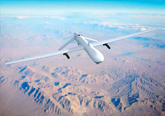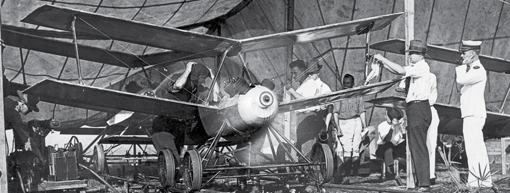
In thinking about the Great War it is interesting to reflect how the length and nature of that conflict shaped subsequent views on the nature of war itself.
The First World War, looking back to the Franco-Prussian War 40 years earlier, was meant to be short and decisive and ‘over by Christmas’. In the event, its combination of industrialisation, mass mobilisation and 19th-century military thinking meant that it was long, static and grotesquely destructive of blood and treasure. Indeed the effort to avoid a repeat of this human disaster and the bid to avoid war and confrontation at all costs, paradoxically, fed the tragic slide into conflict 20 years later. In the same way that the political origins of the Second World War were sown in the revulsion at the Great War, warfare itself has evolved and changed through a variety of mutations over the succeeding century in an attempt to avoid a repeat of this earlier mass slaughter.
Leading much of that change in warfare has been air power, a technology which saw its military debut above the trenches of the First World War in France. From those modest beginnings, however, it has been the evolution of air power that has proved the game-changing military technology of the last 100 years. As a result, a century after the Great War, the use of unmanned aerial vehicles, or drones, for targeted killing in a counterterrorism or counter-insurgency role marks the antithesis of the mass killing of conscript armies on an industrial scale in the fields of France. Notions of the ‘front line’, designated combatants, agreed rules of engagement and conflict between national armies of nation states are now mostly absent from modern wars.
And yet despite this antithesis, the use of ‘drones’ as the evolved form of modern warfare is almost as contentious as the mass slaughter of the trenches a century ago, precisely because it is so surgical, precise and distant, and removes the need for the large-scale deployment of mass armies in expeditionary warfare.
To fully understand that evolution, however, it is necessary to look beyond the book ends of a century of development. Like modern drone technology, the use of air power in the First World War started off in the reconnaissance role. The French word ‘sortie’ – ‘to go out’ – became the name for an aerial mission over enemy lines because of these origins. The range of the aircraft and the immediate need for (their) intelligence meant that these forces served just behind the front line and air forces were an intimate part of the battlefield.

From there, combat in the air and its use against targets on the ground has evolved. By the 1930s the development of the long-range bomber was part of the spectre that fuelled appeasement. The devastating bombing of Guernica in Catalonia by the Luftwaffe in 1937 led to the fear that ‘the bomber would always get through’ and was itself the prelude for the total destruction during the Second World War of entire cities such as Dresden, Coventry, Hamburg and Tokyo by aerial bombing. Air power presented the technology to inflict a greater scale of industrial killing on an enemy than even that which had been achieved in the trenches, and controversially this was possible at much less risk to the forces of the attacking side. As a consequence, the contentious morality of the mass bombing of civilians became an established feature of the air power debate. The ending of the Second World War with the atomic bombing of Japan accentuated this moral dilemma and yet this threat dominated geopolitical rivalry for the next half century, where the fragile peace of the Cold War was upheld by the threat of reciprocal nuclear annihilation.
Despite being one of the principal means of threatening nuclear destruction, air power itself continued to develop. America fought wars from Vietnam to the Gulf War using air power to leverage its technological advantage.
In Libya in 1986, Bosnia in 1995, Kosovo in 1999 and Libya in 2011, the West’s forcible interventions have been limited entirely to air power, precisely because this technology allowed maximum intervention for minimal risk and cost to the intervening side. Air power has evolved to allow discrimination in targeting in a way that has changed the very nature of modern warfare. The carpet bombing of enemy cities no longer plays a role in modern war planning. The massing of armies no longer makes sense when such activity merely presents opportune targets for states with precision air power. And in an age when many enemies of the state are often insurgents and terrorists, the ability to loiter unobserved monitoring ‘pattern of life’ activity is a feature that lends itself to the newest dimension of air power, those operated at physical distance but in near real-time control. Civilians still die in modern warfare and technological advantages also mean that vulnerabilities and casualties are purposefully unequal. Warfare, however, on a global scale, has become a more professional activity principally undertaken by conscious participants. Technology is used to discriminate those who are targeted and its effects are no longer felt by every family of the nations involved as was the case in the years 1914–1918.
Technology like drones allows the military draft and all its consequences to be a thing of the past. By its nature, why and how people are killed in warfare will, rightly, always remain controversial. But in thinking about the modern use of drones it is equally important to remember the historical contexts of those debates.
Professor David Hastings Dunn is Head of the Department of Political Science and International Studies at the University of Birmingham. He is also a coinvestigator with Professor Nicholas Wheeler and Professor Stefan Wolff of an ESRC project on drone use in Afghanistan, Pakistan and Yemen.